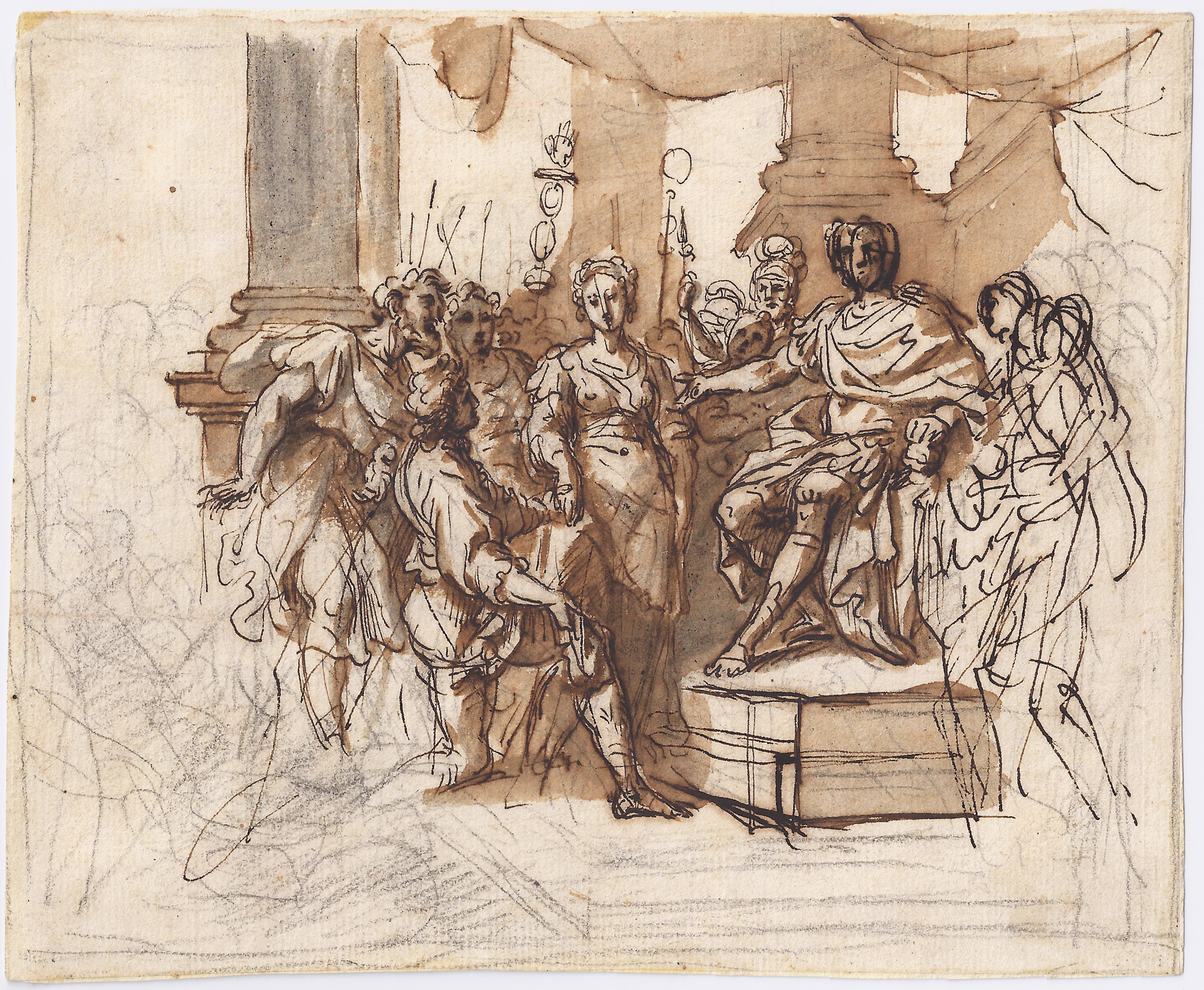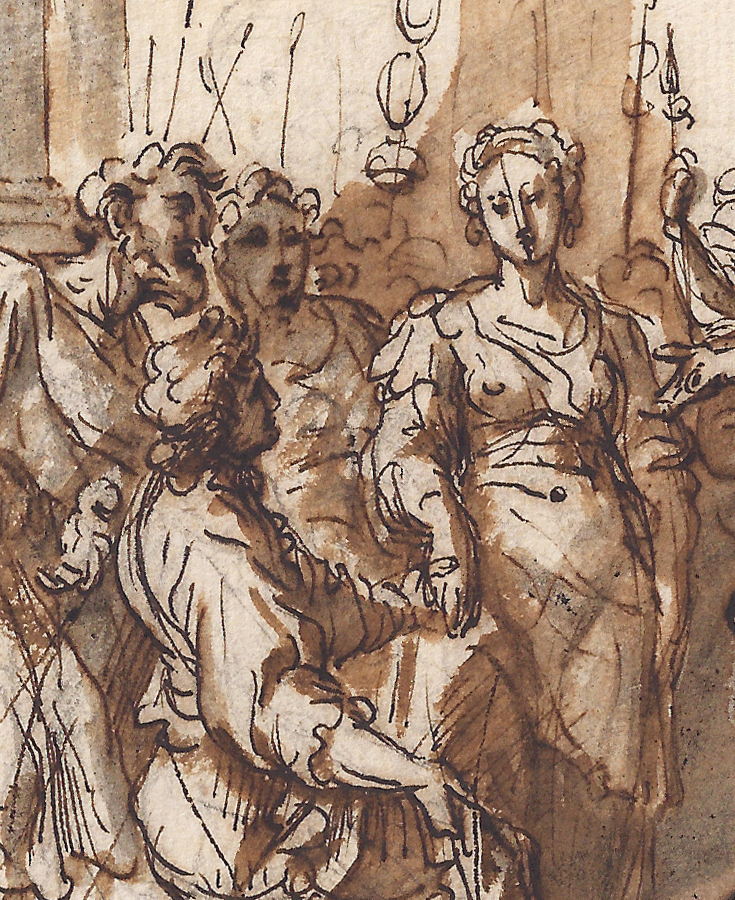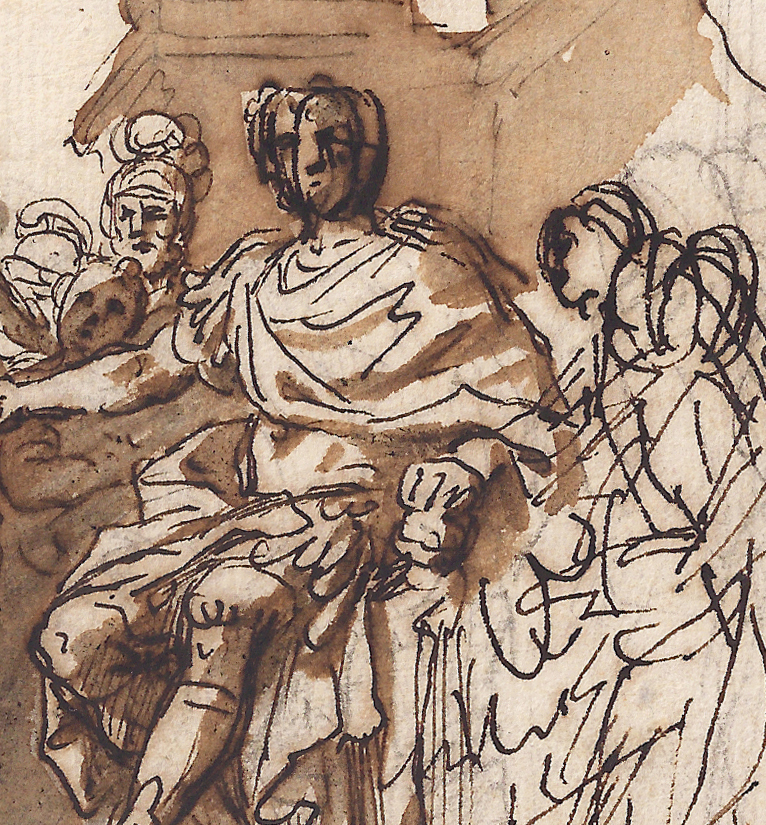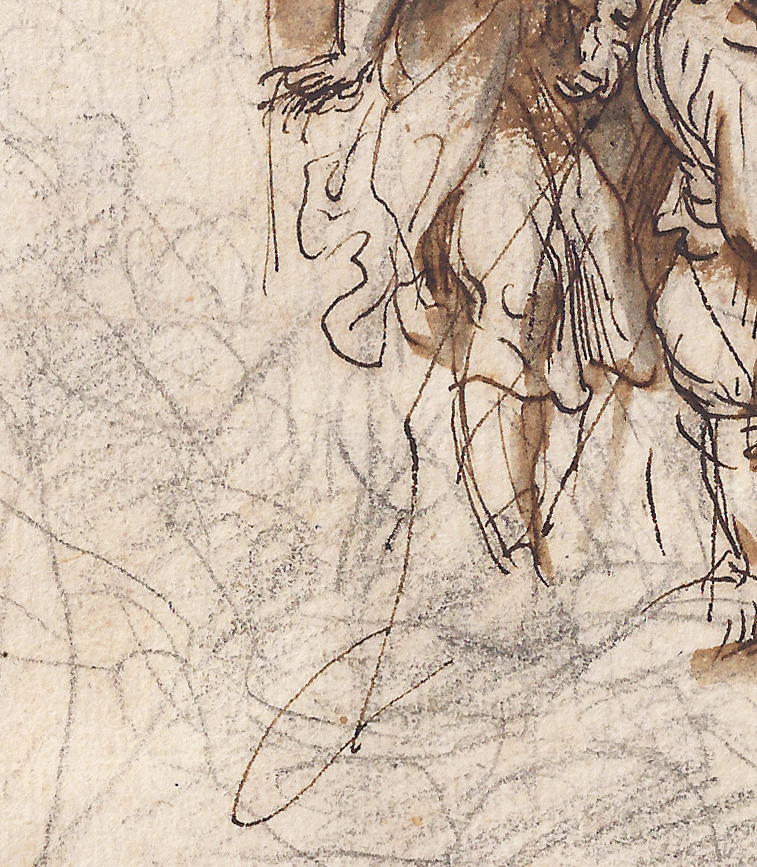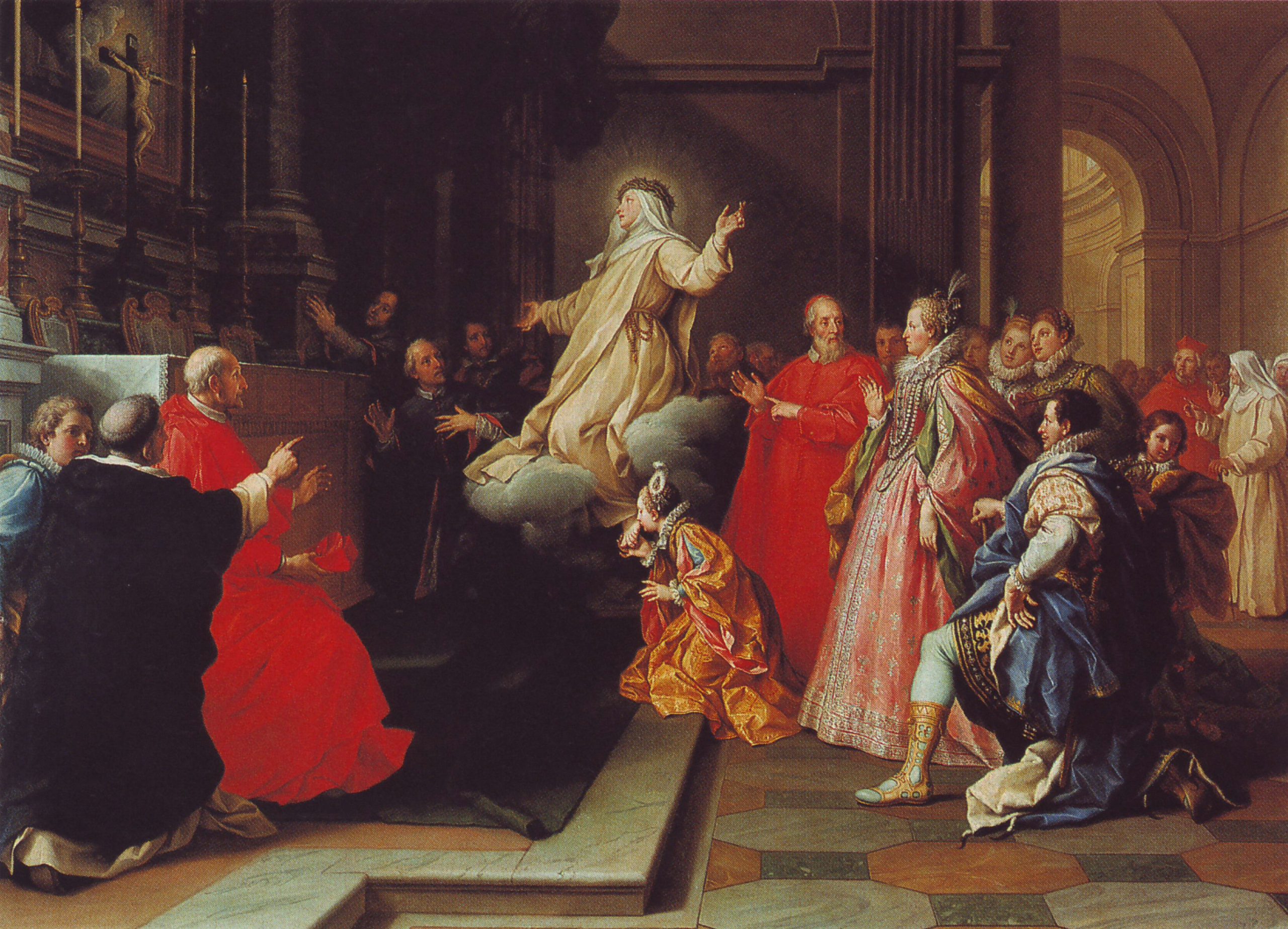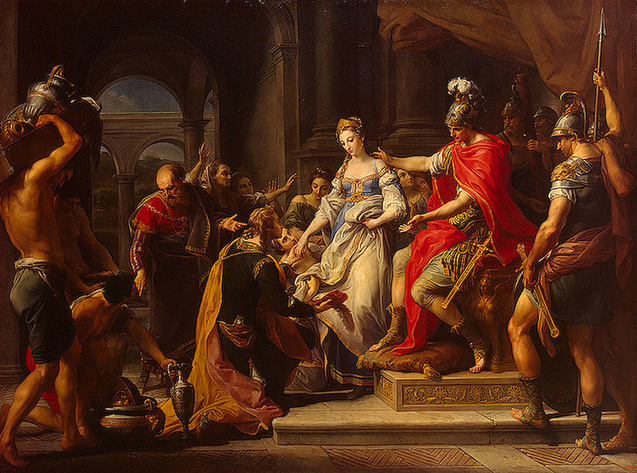AGOSTINO MASUCCI (Rome 1690 – 1768 Rome)
Agostino Masucci (Rome 1690 – 1768 Rome)
The Continence of Scipio
Black chalk, pen and brown ink, brown and grey wash, 157 x 191 mm (6.2 x 7.5 inch)
Provenance
Private collection, Germany
***
Born in Rome, Masucci initially apprenticed with Andrea Procaccino, and then entered the studio of Carlo Maratti.1 He joined the Accademia di San Luca in 1724, and from 1736 to 1738, he was director or Principe. Masucci worked for the Royal House of Savoy, and also obtained commissions from John V of Portugal due to his friendship with Filippo Juvarra and Luigi Vanvitelli. For example, for the latter he painted the main altarpiece of the Cathedral of Évora.
Masucci also made the models for the three main mosaic panels in the Chapel of St. John the Baptist, designed by Luigi Vanvitelli (along with Nicola Salvi) for King John V of Portugal. It was built in Rome starting in 1742, disassembed in 1747, and shipped to Lisbon, where it was reassembled in the Church of St. Roch (Igreja de São Roque). It was completed in 1750, although the mosaics in it were not finished until 1752. Built of many precious marbles and other costly stones, as well as gilt bronze, it was held to be the most expensive chapel in Europe up to that time. Among Masucci’s pupils were Pompeo Batoni, John Zoffany and Gavin Hamilton.
The Roman general Scipio Africanus was offered a beautiful woman called Lucretia as his captive after the defeat of Carthage. But when he was told of her betrothal to the Carthaginian Allucius, Scipio nobly returned Lucretia to him and returned the gold sent as ransom by her parents. Scipio is shown enthroned, blessing the marriage taking place in front of him.
This recently discovered drawing is executed in a particularly painterly style, in which the artist very swiftly sketched initial thoughs in black chalk, and proceeded to work out the main scene in pen and brown ink, adding wash to give depth to the composition. Masucci drew the face of Scipio in two positions, which illustrates how the artist worked out the composition in this working drawing, presumably a design for a painting. The kneeling figure in our drawing may be compared to a similar figure, albeit in reverse, in Masucci’s painting The Ecstacy of St. Margherita de’ Ricci in the Galleria Nazionale d’Arte Antica, Palazzo Corsini, Rome (fig).
Pompeo Batoni, one of Masucci’s pupils, must have known this composition by his master, either from this drawing, or from a resulting painting by Masucci, now lost. His own painting of The Continence of Scipio clearly pays tribute to Masucci’s treatment of the theme (fig.). The painting was commissioned by Count Chouvaloff for Empress Catherine the Great in 1768 and is now in the Hermitage, St. Petersburg.2 It is interesting to note that Masucci died just around the time of the commission and it is just possible that Batoni acquired or inherited some of his former master’s drawings.
I am grateful to Professor Francesco Petrucci for suggesting the attribution to Masucci and to Nicholas Turner for confirming the authorship.3
SOLD
1. For the artist, see for instance: A. Czére,'"Magnificavit eum in timore inimicorum”. Episodi della vita di Sant'Ignazio nell'interpretazione di Agostino Masucci’, Bulletin du Musée Hongrois des Beaux-Arts, 96 (2002), pp. 103-82.
2. Oil on canvas, 226.5 x 297.5 cm; Anthony M. Clark, Pompeo Batoni: a complete catalogue of his works, Oxford 1985, p. 320. The painting forms a pair with Thetis Takes Achilles from the Centaur Chiron, commissioned for the Empress at the same time.
3. Email correspondence of 13 August 2013.
